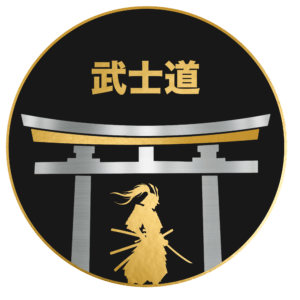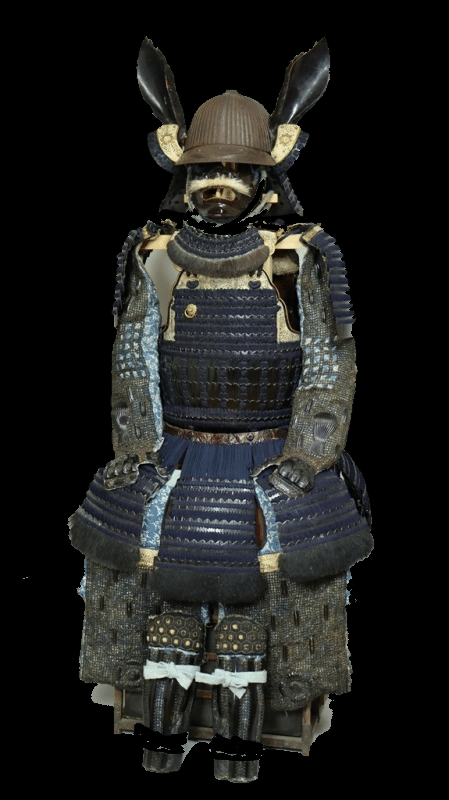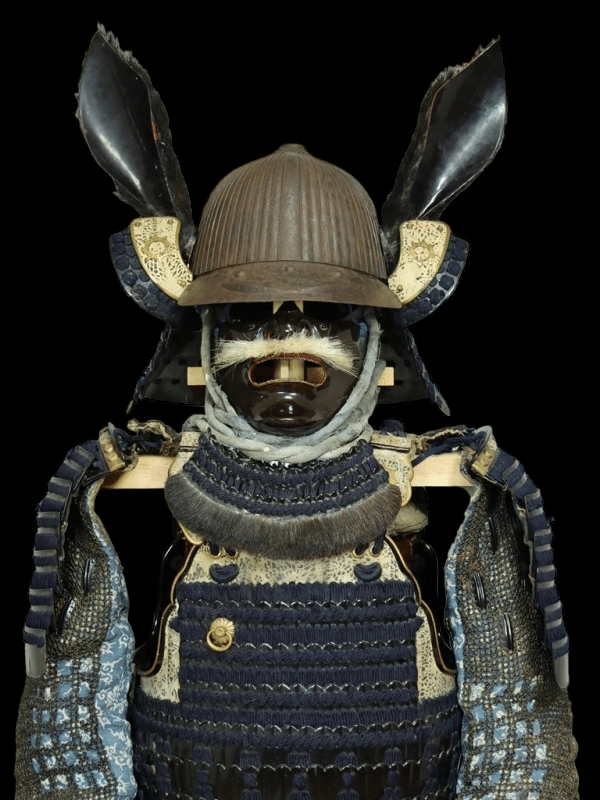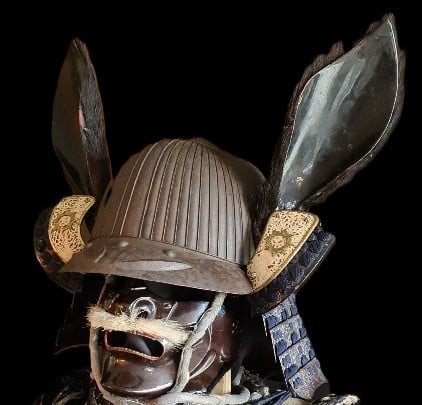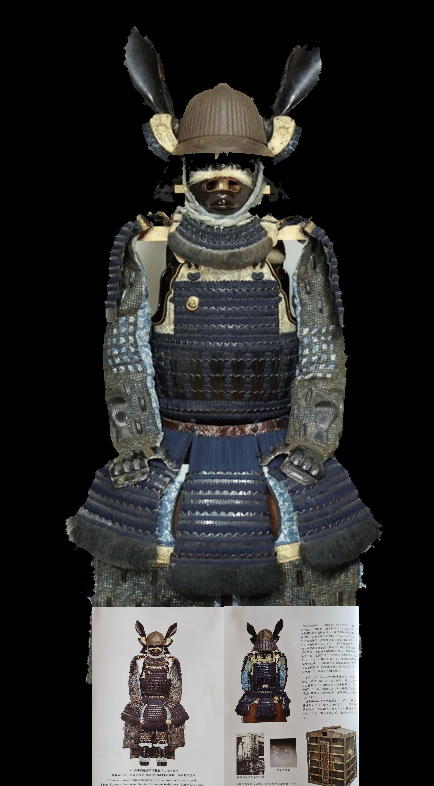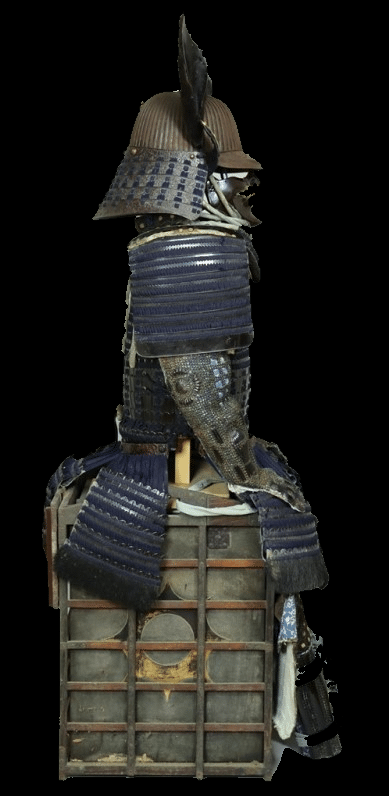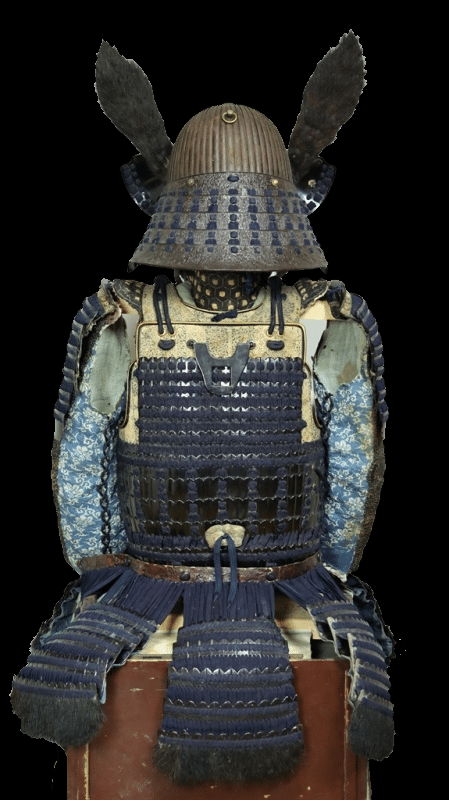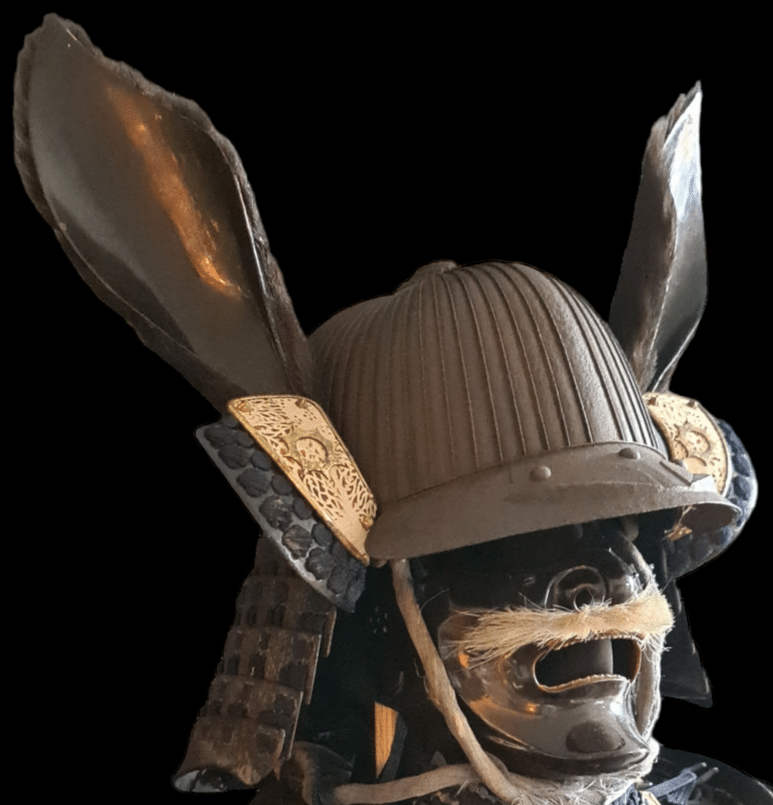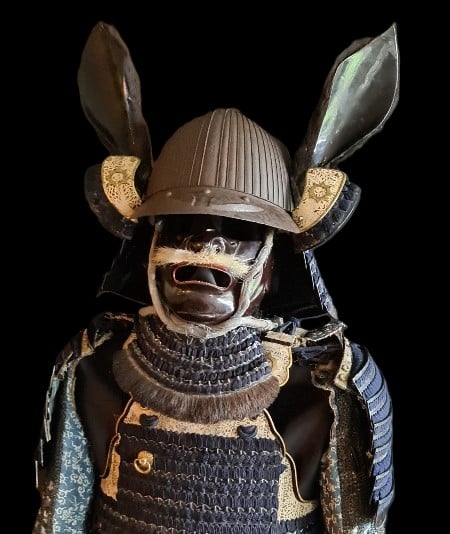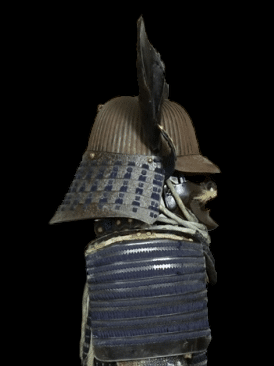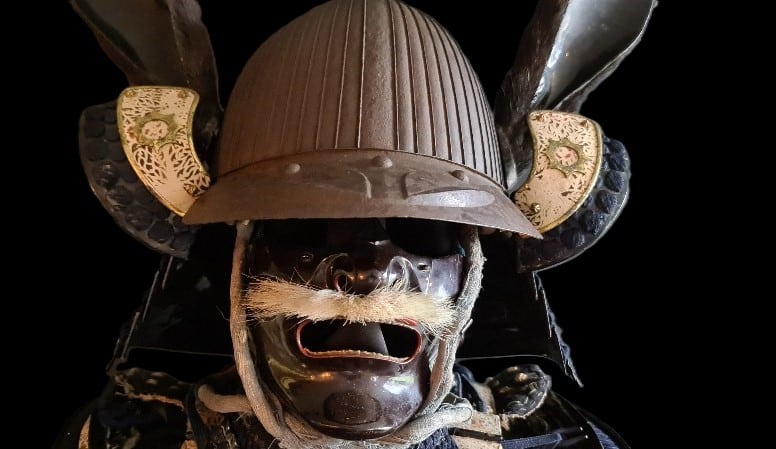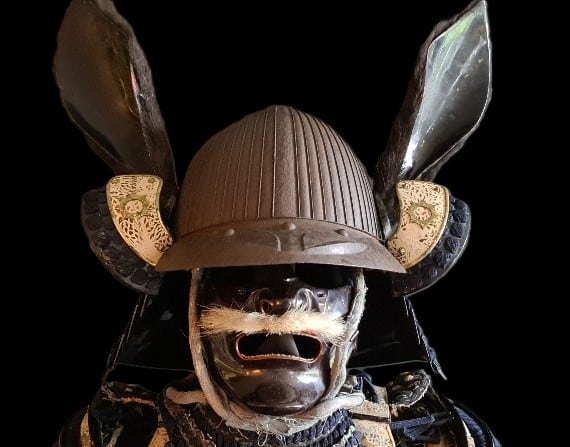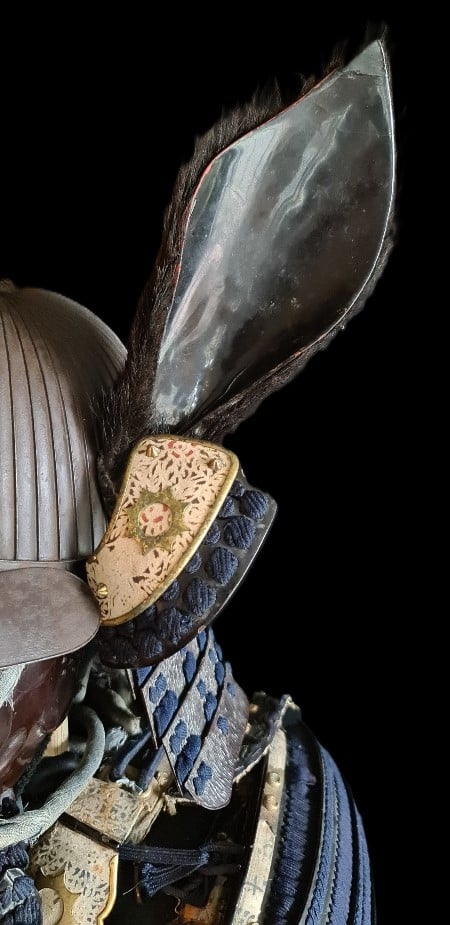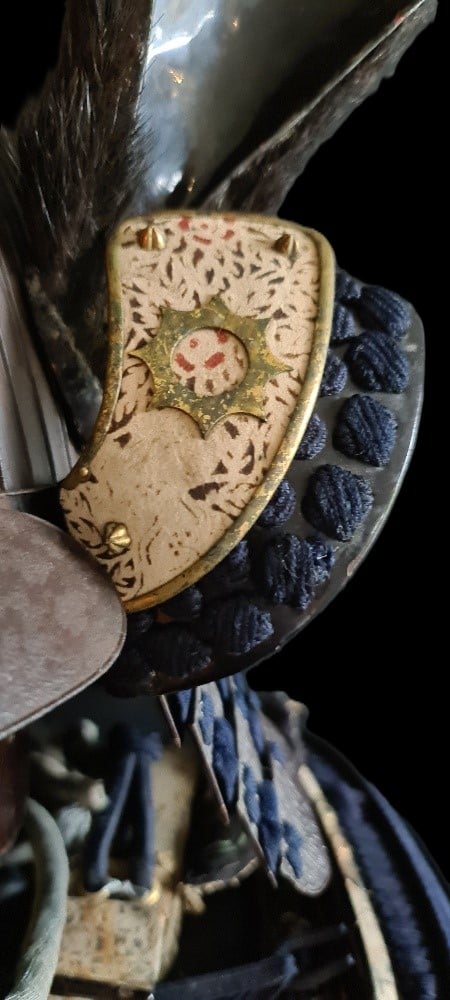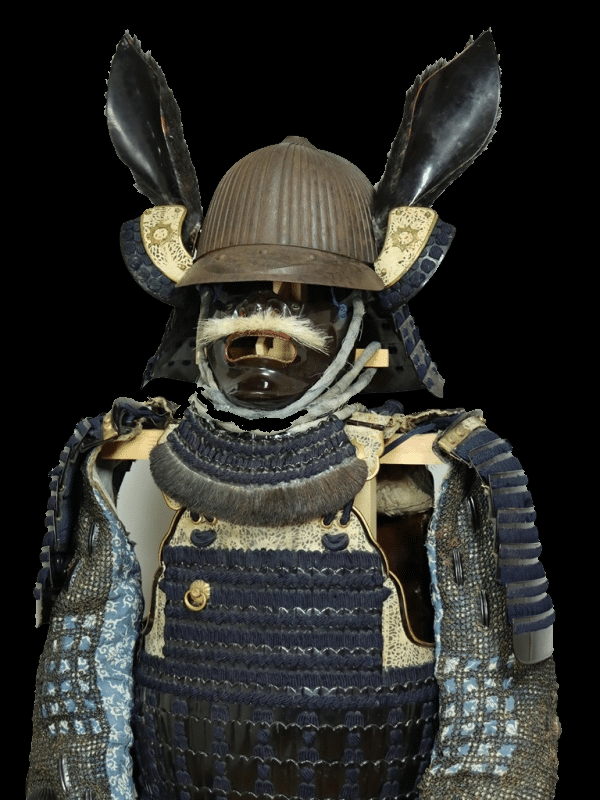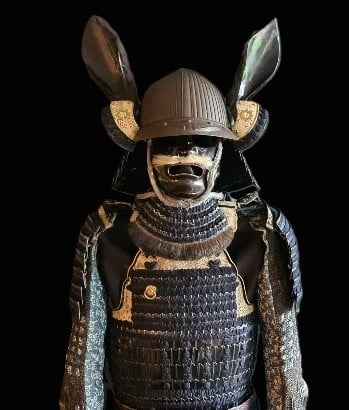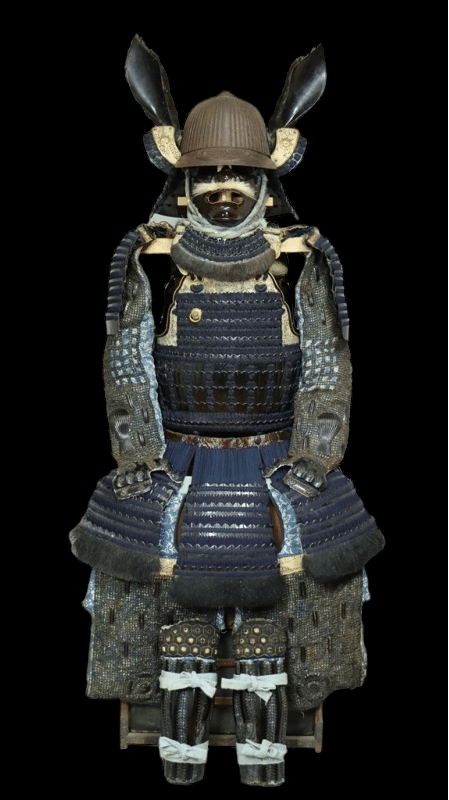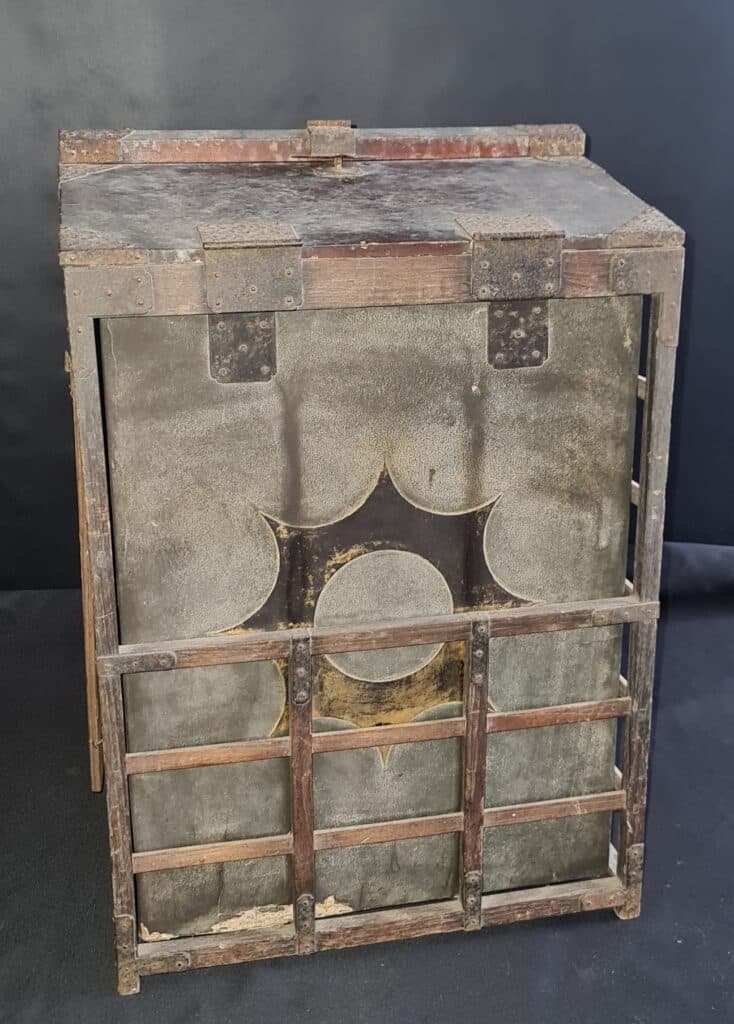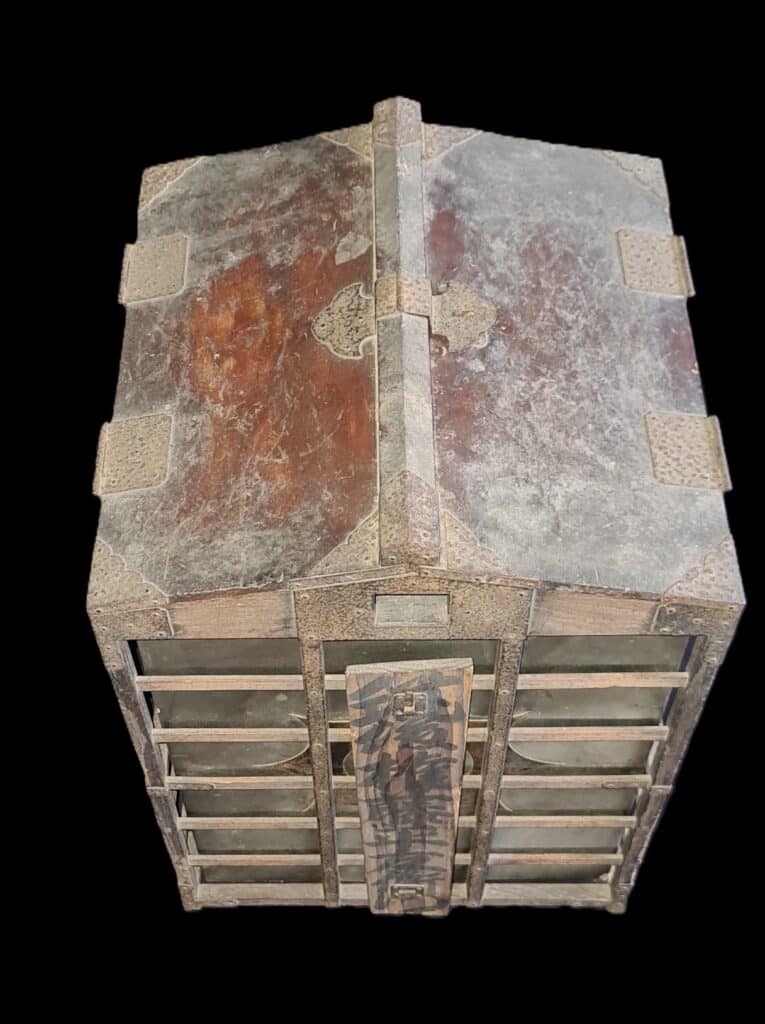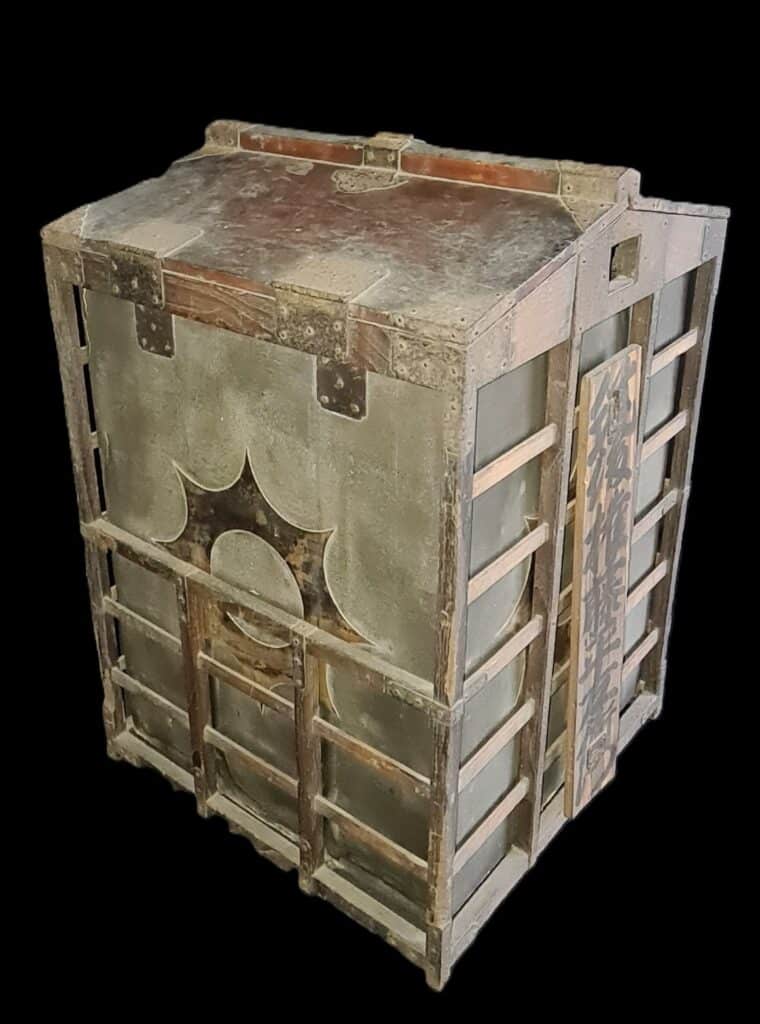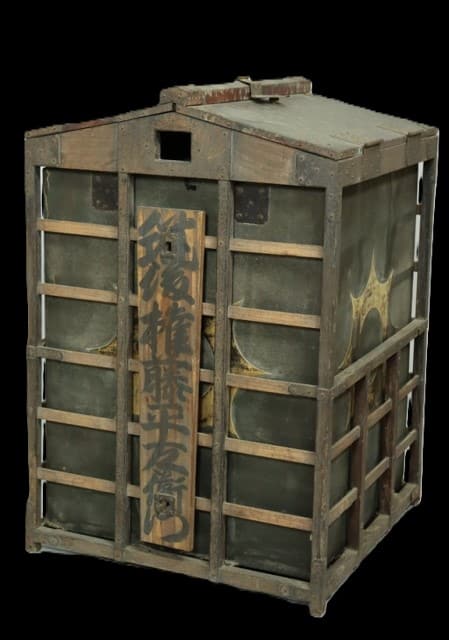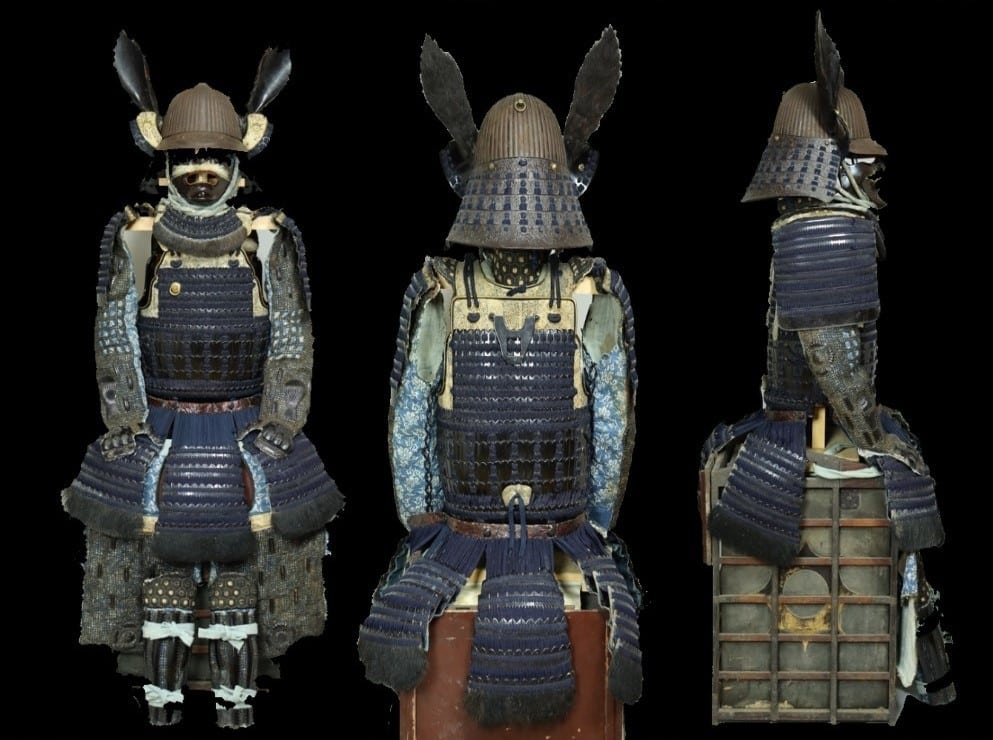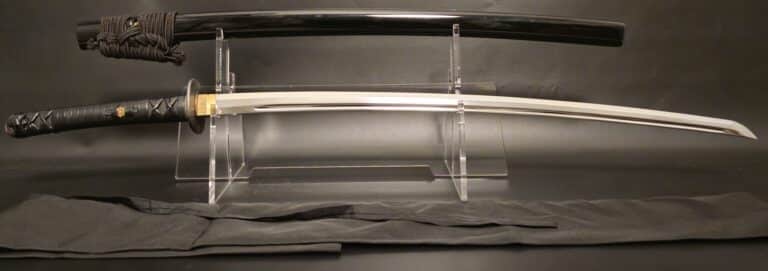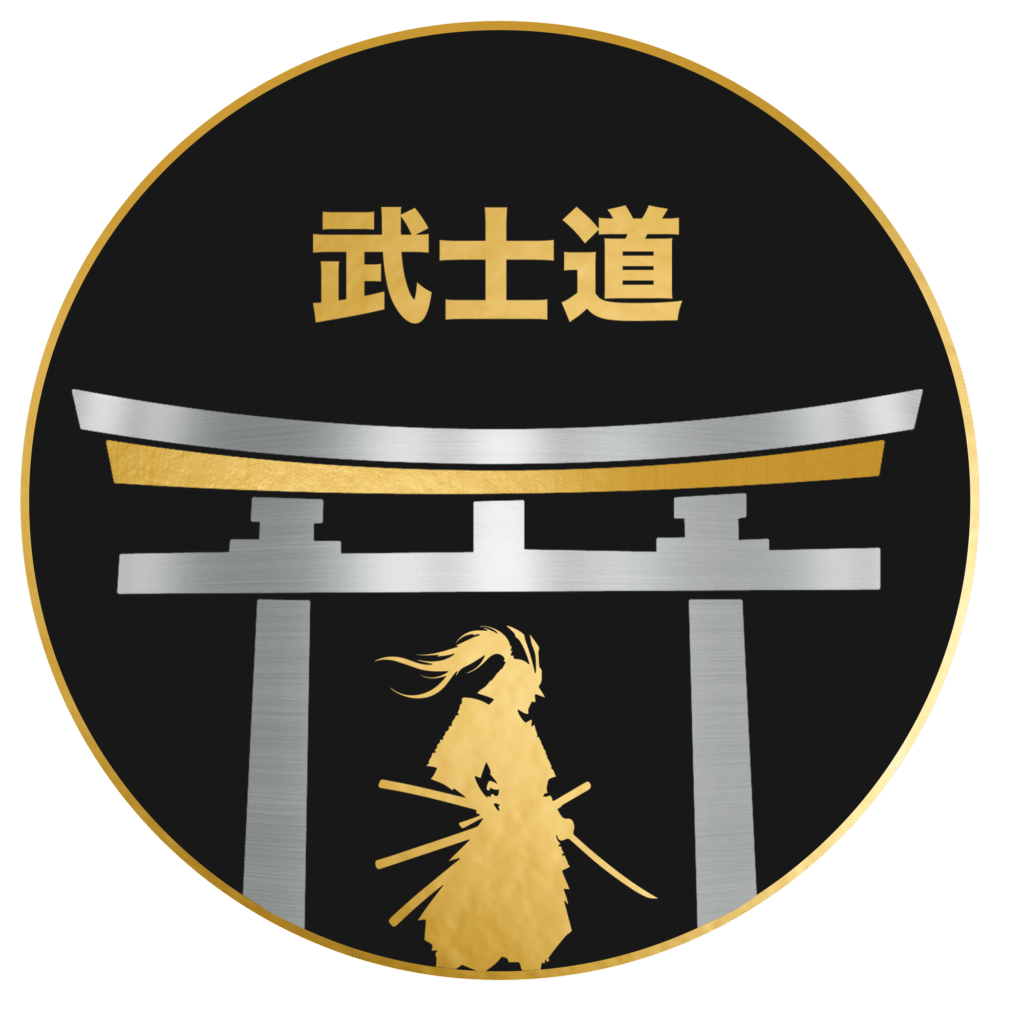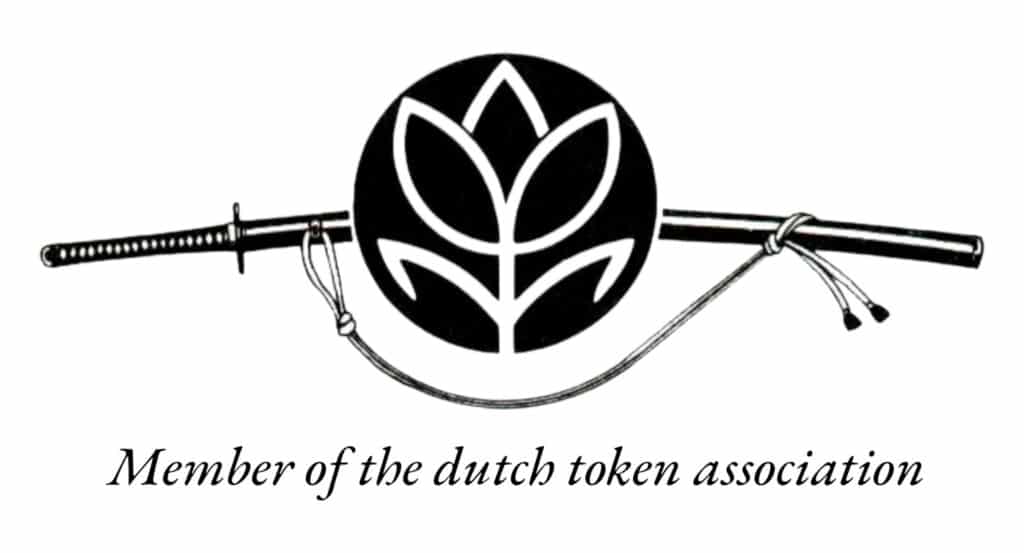Description
Armor Description.
-
Sujibachi (62 iron plates helmet with wakidate):
The sujibachi helmet was made by lacing many narrow iron plates (in this case, 62) to form a strong, lightweight dome. The wakidate refers to the decorative side crests or horns attached to the helmet, often symbolizing rank, clan, or personal identity. This helmet provided critical head protection in battle, while also showcasing the samurai’s status. -
Ressei Menpo (Iron black lacquered face mask):
The menpo covered the lower face, protecting the samurai’s face from arrows and swords while intimidating enemies with its fierce design. Lacquering prevented rust and added aesthetic value. -
Goishigashirazane 2maido (Iron black lacquered cuirass):
This is the chest armor, constructed with overlapping iron plates to guard the torso. The name suggests a layered construction designed to be both flexible and protective. -
Tousei Sode (Shoulder guards):
These were broad, iron plates protecting the shoulders, designed to deflect blows and arrows. The “tousei” style represents the “modern” plate armor style developed during the Sengoku and Edo periods. -
Shiwafukube Kote (Armored sleeves):
These sleeves protected the arms and forearms while allowing enough flexibility for swordplay. The intricate lacing and lacquer finish reflect high craftsmanship. -
Koshino Haidate (Thigh guards):
Guards for the upper legs, protecting the thighs from slashes and arrows, usually made of iron plates connected by leather or fabric. -
Shino Suneate (Shin guards):
Armor pieces protecting the lower legs, essential for cavalry or foot soldiers to prevent injury while moving or fighting.
History of the Kurume Clan and the Arima Family
-
Kurume Domain:
Kurume was a feudal domain (han) in Chikugo Province, now part of modern-day Fukuoka Prefecture on Kyushu Island. It was an important area during the Edo period, primarily agricultural but strategically located, controlling access to the northern part of Kyushu. -
The Arima Family:
The Arima clan was a prominent samurai family that ruled Kurume throughout the Edo period under the Tokugawa shogunate’s feudal system. The Arima were known for their martial prowess, governance, and loyalty to the Tokugawa shogunate, which maintained peace and order in Japan from 1603 to 1868. -
Gondo Family’s Role:
The Gondo family were retainers or vassals to the Arima lords. This meant they were samurai responsible for military service, managing lands, and maintaining order within the domain. Their unwavering loyalty and participation in battles helped secure the Arima clan’s rule and prestige. -
Kyushu and the Edo Period:
Kyushu, being Japan’s southwesternmost major island, was a key region during the Edo period for trade, military defense, and politics. The region saw occasional conflicts, including uprisings and clan disputes, making the role of samurai retainers like the Gondo family vital.Life and Legacy of Gondo Heizaemon Yoshimasa
-
Birth and Background:
Gondo Heizaemon Yoshimasa was born in 1664 in Chikugo Province (now Fukuoka Prefecture), during the early Edo period. As a member of the Gondo family, he was born into the samurai class serving the Arima clan of the Kurume domain. -
Role and Responsibilities:
As a samurai retainer, Heizaemon would have been responsible for both military and administrative duties. This included training in martial arts, participating in local defense, and managing land or agricultural resources to support the domain’s economy. -
Military Engagements:
While the Edo period was largely peaceful under Tokugawa rule, smaller local conflicts, policing duties, and occasional skirmishes still required samurai readiness. The Gondo family participated in several battles and wars supporting the Arima clan, although detailed records of Heizaemon’s direct combat experiences may be scarce due to the relative peace of the time. -
Armor as a Symbol:
The armor you described—crafted between 1680 and 1700—would have been worn by Heizaemon or prepared for him during his early adult years. It symbolizes his rank, responsibilities, and the samurai ethos of loyalty, honor, and martial readiness. -
Death and Burial:
Heizaemon died in 1730 and was buried in Kurume, his lifelong home and service domain. His legacy lived on through the armor and the continued service of his family to the Arima clan. - Price please contact us
-
